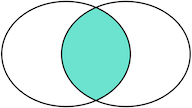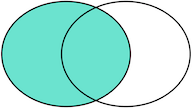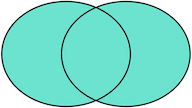DML
DML 语句主要针对数据表的增删改查操作,即对数据表的 INSERT、DELETE、UPDATE、SELECT 操作
1.SELECT查询
查询可以使用AND OR NOT
//查询SELECT * FROM students;SELECT * FROM students WHERE score >= 80;SELECT * FROM students WHERE NOT class_id = 2;SELECT * FROM students WHERE score >= 80 OR gender = 'M';SELECT * FROM students WHERE score >= 80 AND gender = 'M';SELECT * FROM students WHERE (score < 80 OR score > 90) AND gender = 'M';
使用别名
//以下SELECT语句将列名score重命名为points,而id和name列名保持不变:SELECT id, score points, name FROM students;
排序
SELECT id, name, gender, score FROM students ORDER BY score;SELECT id, name, gender, score FROM students ORDER BY score DESC;//如果有WHERE子句,那么ORDER BY子句要放到WHERE子句后面SELECT id, name, gender, scoreFROM studentsWHERE class_id = 1ORDER BY score DESC;//ORDER BY score DESC, gender表示先按score列倒序,如果有相同分数的,再按gender列排序:SELECT id, name, gender, score FROM students ORDER BY score DESC, gender;
分页查询
SELECT id, name, gender, scoreFROM studentsORDER BY score DESCLIMIT 3 OFFSET 0;//跳过三条数据,查询第二页的数据SELECT id, name, gender, scoreFROM studentsORDER BY score DESCLIMIT 3 OFFSET 3;
聚合查询
//计数SELECT COUNT(*) FROM students;//取个别名方便查看SELECT COUNT(*) num FROM students;//分组聚合SELECT class_id, COUNT(*) num FROM students GROUP BY class_id;//也可以使用多个列进行分组。例如,我们想统计各班的男生和女生人数:SELECT class_id, gender, COUNT(*) num FROM students GROUP BY class_id, gender;
除了COUNT
| SUM | 计算某一列的合计值,该列必须为数值类型 |
|---|---|
| AVG | 计算某一列的平均值,该列必须为数值类型 |
| MAX | 计算某一列的最大值 |
| MIN | 计算某一列的最小值 |
多表查询
SELECTs.id sid,s.name,s.gender,s.score,c.id cid,c.name cnameFROM students s, classes cWHERE s.gender = 'M' AND c.id = 1;
连接查询
//内连接——INNER JOIN来实现SELECT s.id, s.name, s.class_id, c.name class_name, s.gender, s.scoreFROM students sINNER JOIN classes cON s.class_id = c.id;
对于这么多种JOIN查询,到底什么使用应该用哪种呢?其实我们用图来表示结果集就一目了然了。
假设查询语句是:
SELECT ... FROM tableA ??? JOIN tableB ON tableA.column1 = tableB.column2;
我们把tableA看作左表,把tableB看成右表,那么INNER JOIN是选出两张表都存在的记录:
LEFT OUTER JOIN是选出左表存在的记录:
RIGHT OUTER JOIN是选出右表存在的记录:
FULL OUTER JOIN则是选出左右表都存在的记录:

